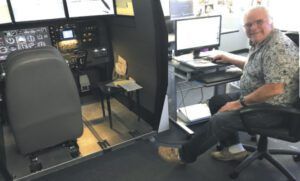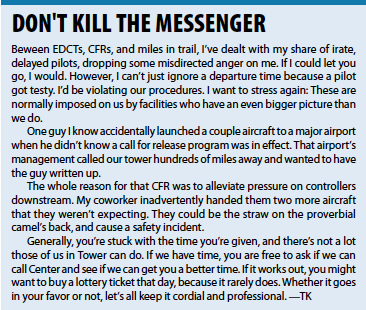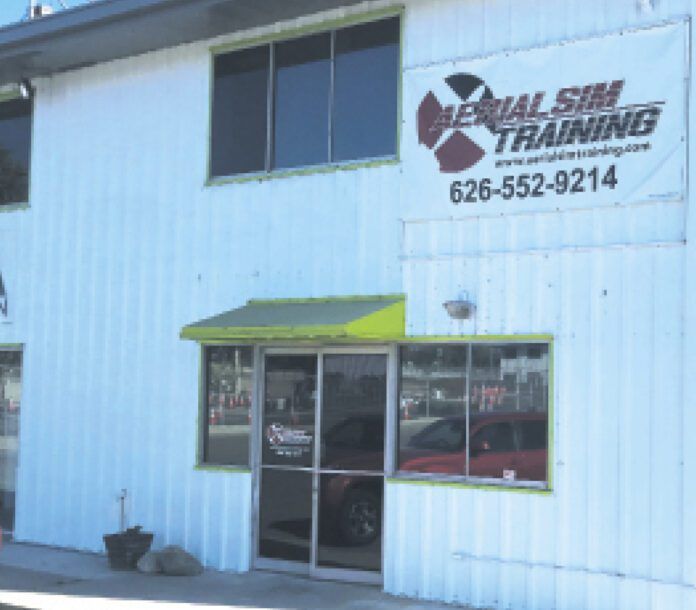Annual recurrent simulator training takes multiple forms. For more advanced aircraft, typically turboprops and jet aircraft, that training takes place at a large formal facility such as Flight Safety, CAE, SIMCOM, or Recurrent Training Center (RTC). These facilities typically employ custom simulators that are aircraft-specific Flight Training Devices (FTDs) all the way up to airline-style Level D full-flight simulators. At the other end of the spectrum, typically training simpler single-engine piston birds, are well-equipped local schools utilizing one of the more affordable advanced aviation training devices, typically from Precision Flight Controls, Redbird, or Elite.
The gap in those statements is more complex piston aircraft and medium to heavy twins? A couple of the large national facilities, notably Recurrent Training Center (RTC, where I went last year) and SIMCOM, maintain a modest presence in that middle ground. Other schools addressing that middle ground are schools that likely started as smaller local facilities, but their presence in that space gained some national exposure, which gets them a larger audience than exists locally.
I’ve attended one such school, National Flight Simulator. Another is Aerial Sim Training, located in Southern California, which I attended for this year’s training.
Who?

Jeff Strouse, owner and Chief Pilot for Aerial Sim Training, has been active in aviation for over four decades, flying corporate, charter, and major airlines. While Jeff at one time had a full staff, he’s now quite happily a one-man show. “I’m as busy as I want to be,” he said.
Aerial Sim Training is located at San Gabriel Valley Airport (KEMT) in El Monte, California, lurking about two miles from the gerrymandered Los Angeles Class B. It was interesting flying there in the famous LA haze with the advertised approach being a VOR approach in moderate VMC. But that’s a different story.
Aerial Sim Training offers simulator-based training for all the popular singles, plus the popular twins up through the Baron 58TC and Cessna 421. My training was for my Cessna 340A. Jeff, an experienced Gold-Seal instructor, also offers in-aircraft training (in customer aircraft) upon request.
Ground Training
During the pandemic, Jeff conducted his ground training via Zoom, which he’s continued. It worked well and I welcomed conducting the training interactively at home in three, three-hour sessions.
Aerial Sim Training takes a different approach to ground training materials than any others I’ve found. Before the training, I was sent training materials that were Jeff’s version of reproduced material from Flight Safety. Years ago, Flight Safety used to offer some Twin Cessna training, and after they stopped, Jeff got permission to reproduce their material. He has extensively supplemented that material with his own PowerPoint presentations. It was good, thorough training with excellent material.
Jeff also sent a reprint of a Cessna 340A POH. This was a useful reference during portions of the training as we were both referring to precisely the same material rather than using slightly different versions from different aircraft model years.
At the end of the ground training I felt comfortably refreshed on the aircraft systems and other needed topics (regs, procedures, etc.).
Sim Training
Aerial Sim Training uses a Precision Flight Controls DCX Max certified as an Advanced Aviation Training Device, AATD. This is perhaps the most capable general-aviation piston ATD, offering motion, control loading, five monitors for external visuals that extend beyond 180 degrees, remotely activated circuit breakers (simulating failures), and the ability to model over 30 piston single- and multi-engine aircraft.
Most aviation training devices (ATDs) offer aerodynamics that noticeably diverge from real-world aircraft, and the DCX Max is no exception. However, I found the DCX Max to be somewhat more natural to real-world handling than other ATDs. Thus, while it was different, it wasn’t particularly difficult to fly. That was welcome since I didn’t need yet more distractions as I attempted to learn the panel, avionics, and physicality of the sim. (See sidebar.)
The six hours (one day) in the sim followed a predictable progression from basic maneuvers for familiarization, to precision handling, through instrument approaches with and without various failures. Of course, liberally sprinkled in there were multiple engine failures, often at takeoff rotation. This all amounted to good, useful training.
The high-end, multi-million dollar simulators used in corporate and airline training often include theatrical smoke generators that are used for smoke-in-the-cockpit situations and to simulate the near-instant fog that results from a sudden pressurization loss. While this, of course, is impractical in an ATD-class sim, I was amused by Jeff’s attempt to simulate a pressurization loss. Seated behind me to my right (out of view) Jeff somehow caused a loud “BANG” accompanied by him tossing a bunch of confetti into the cockpit. I failed that exercise because I was laughing, not flying, and clueless about what he was trying to simulate. Nonetheless, it was a good lesson. (Put on your oxygen mask first.)

Differentiators
In many ways, this training followed a predictable path, similar to most refresher training I’ve attended. Notably, though, there are differentiators. First, was the extremely well-prepared material itself. Next, of course, was the ground training via Zoom, which reduced my travel time to just one night.
The normal pricing at Aerial Sim Training for this level of training is somewhat variable based on multiple factors, but is in the mid-two-thousand range. Another differentiator, however, and an important one, is that the tuition includes another visit to the sim in six months.
Generally, pilots needing training of this type should (or are required to) attend the training annually. Of course, you leave the training freshly instrument current and legally good for six months. With a return visit in six months for more approaches in the sim, you’ll remain legally current the entire year until your next annual recurrent training.
There’s one more value add for the training at Aerial Sim Training. Like RTC and SIMCOM, but few others, Aerial Sim Training has jumped through the FAA hoops necessary to provide WINGS credit for their recurrent training programs. This credit is sufficient for a phase of WINGS and thus constitutes a flight review.
For these reasons, I highly recommend Aerial Sim Training as quite possibly the best available value in recurrent simulator-based training.





